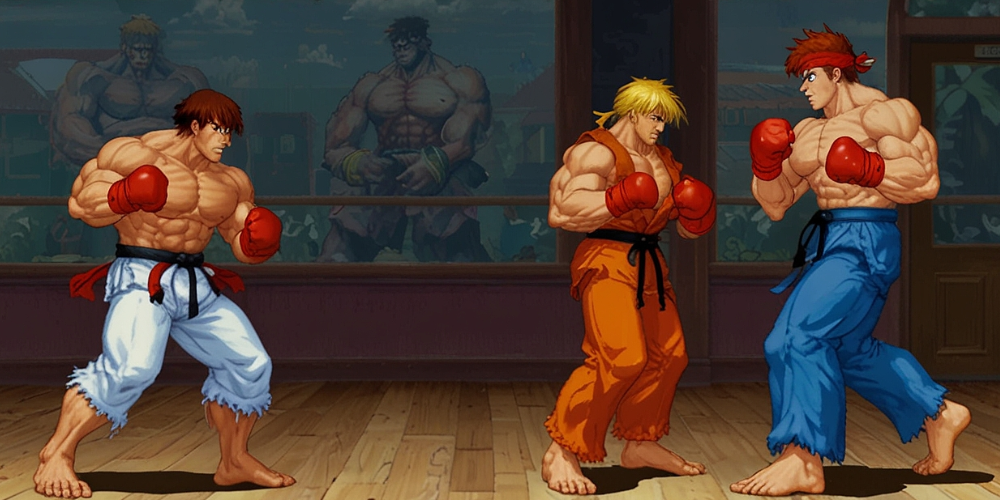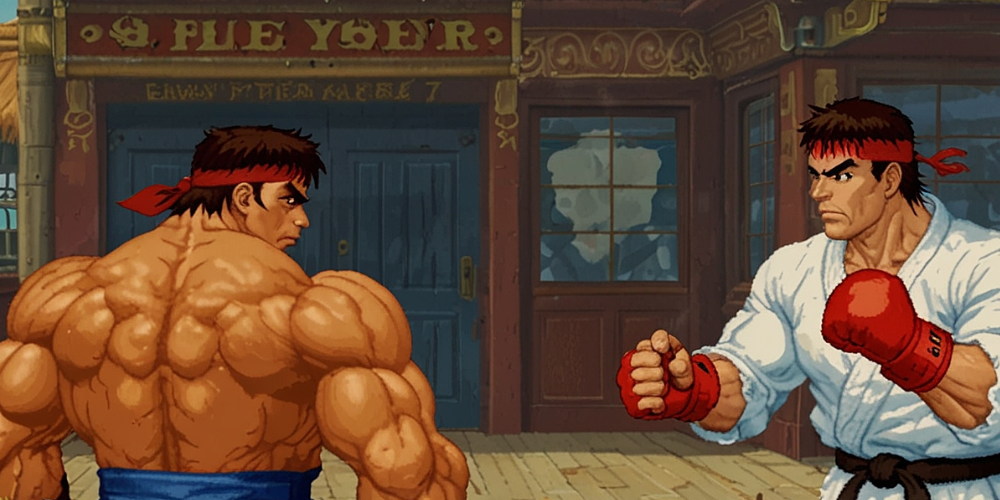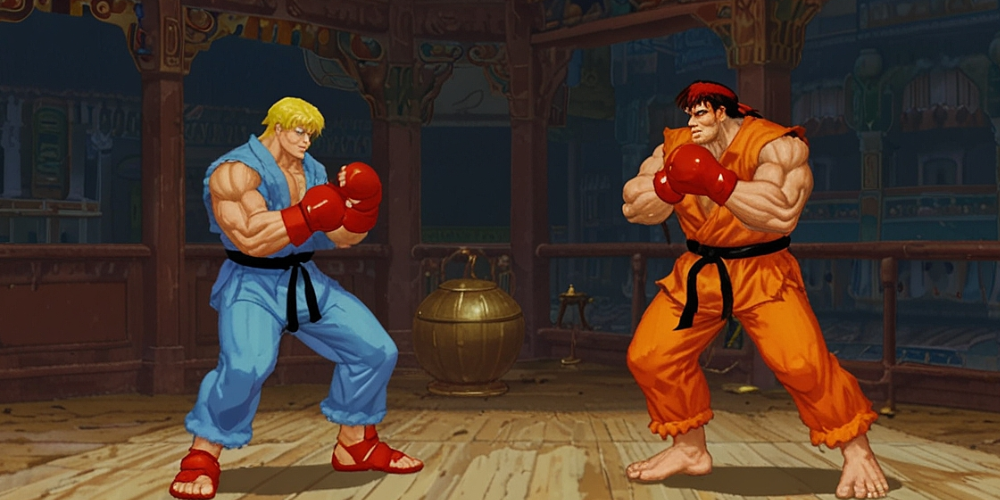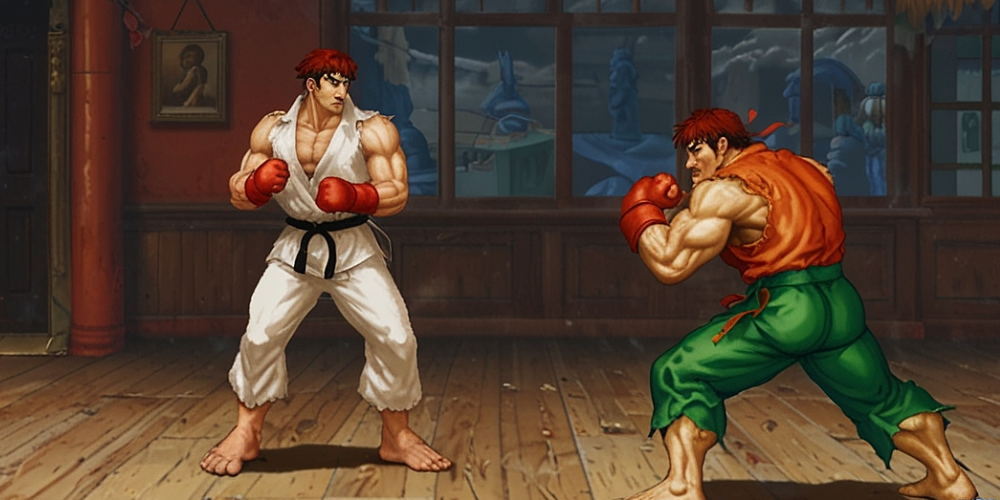The Cultural Influence of Street Fighter II on Fighting Games
Oct-01-2024

As a child growing up in the 90s, I vividly remember the first time I laid eyes on Street Fighter II. The vibrant colors, dynamic character designs, and the electrifying feel of competitive play made a lasting impression on me. What began as mere fascination turned into a deep appreciation for not just the game itself, but also its significant cultural influence on the world of fighting games. Through my journey, I've come to understand how Street Fighter II redefined the genre and inspired an entire generation of game developers and players alike.
Defining the Fighting Game Genre
Before Street Fighter II was released, fighting games were mostly simplistic and lacked depth. I recall older arcades offering titles that had basic one-on-one mechanics, but they didn’t possess the complexity or character variety that Street Fighter II introduced. The introduction of distinct characters, each with their own elaborate movesets and backstories, brought a new level of engagement to the genre. It was as if a whole new world opened up—one that encouraged players to invest time and learn the intricacies of each fighter.
A Cast of Memorable Characters
The vibrant character roster was one of the key elements that drew me into the game. Each fighter, from Ryu to Chun-Li, was not just a set of stats and moves; they were personalities with rich backgrounds rooted in different cultures. I remember spending hours reading about each character’s story, trying to connect them with the way I played. This varied combination not only attracted a wider range of players but also set the foundation for character growth that upcoming fighting games would aim to achieve.
The Rise of Combo Systems
The combo system introduced in Street Fighter II was revolutionary. It was a game-changer for how fighting games were structured. I still recall the adrenaline rush I felt when I perfected a string of attacks, chaining moves together to create a stylish combo. This mechanic encouraged creativity and skill mastery, leading to a new approach to competition. Other games soon adopted similar systems, realizing that players loved the thrill of executing complex maneuvers.

The Competitive Scene blossomed
Witnessing the competitive scene spring to life was one of the most thrilling aspects of Street Fighter II's legacy. Local arcades became battlegrounds where players gathered, showcasing their skills. I was among those who would spend my weekends in the arcade, watching veterans display their prowess and soaking up the electric atmosphere. Tournaments began to arise, creating a community of gamers who celebrated the mastery of the game, ultimately paving the way for professional esports.
Influence on Game Design
Street Fighter II didn’t just inspire players; it had a direct impact on game design principles. Developers saw the financial success and cultural impact of this title and sought to replicate its winning formula. Fighting games soon began incorporating deeper mechanics, multi-layered animations, and intricate character arcs. As a result, the genre evolved rapidly, leading to titles that offered more grounded experiences and a higher level of player engagement.
The Evolution of Graphics and Sound
Walking into an arcade and hearing the distinct sounds of Street Fighter II was as mesmerizing as watching the gameplay itself. The visuals were advanced for their time, capturing the essence of each character through animations and backgrounds. I found the attention to detail in graphics and sound design heightened my immersion. The game’s iconic music and sound effects quickly became embedded into pop culture, influencing future soundtracks in the genre.

Diversity in Gameplay Styles
Another fascinating aspect of Street Fighter II was its accommodation of different playstyles. Whether I favored a defensive approach or preferred aggressive tactics, the game allowed me to express my style in unique ways. This inclusivity inspired other developers to think about player agency within their games. Fighting games began to embrace a variety of approaches, offering players multiple avenues to develop their strategies.
Rivalries and Friendships
Street Fighter II also shaped social interactions among players. The rivalries formed during matches fostered a sense of community that extended far beyond the arcade. I remember some of my closest friendships blossomed over heated battles and playful taunts. Bit by bit, these interactions helped create a culture around competitive gaming that transcended the act of merely playing; they were about building connections and shared experiences.
Cultural Representation and Iconography
Street Fighter II made strides in cultural representation, showcasing characters from all corners of the globe. Ryu embodied the spirit of the wandering warrior, while Chun-Li symbolized strength and resilience. The way these characters brought their cultural backgrounds into the fighting world made a profound impact. It was a celebration of diversity that resonated with players from all walks of life, including me, who embraced the harmony of cultures in this shared arena.
The Legacy of Special Moves and Super Combos
The introduction of special moves and super combos became a hallmark of Street Fighter II. These elements not only enhanced gameplay but also captivated the imagination of players. I spent countless hours practicing the motions required to unleash a Shoryuken or a Spinning Bird Kick. These moves became signature elements in the fighting landscape, and many subsequent games emulated this feature to appeal to players craving that same excitement.

Connection to Pop Culture
The impact of Street Fighter II extended into pop culture, a phenomenon that offered players even more avenues of connection. I marveled at the animated adaptations, comic books, and even feature films that emerged, illustrating the game's widespread appeal. The characters leaped off the screen and into everyday life, influencing various media forms and keeping the spirit of Street Fighter alive beyond the pixels.
Enduring Appeal through New Installments
Even as gaming technology has advanced, the essence of Street Fighter II continues to inspire new installments in the franchise, such as Street Fighter V and beyond. I notice how each new game pays homage to its predecessor while introducing innovations that keep the series fresh. The balance between nostalgia and innovation is a delicate dance that I appreciate, reflecting the original game's spirit while allowing for growth and evolution.
The Role of Community-driven Events
Another significant aspect of Street Fighter II's legacy is the emergence of community-driven events. Over the years, grassroots tournaments and local meetups have become a staple in the gaming community. I have participated in many local events, and each one fosters a sense of belonging. They evoke memories of the arcade era, allowing gamers to demonstrate their abilities and engage with fellow enthusiasts who have a love for the game.
Modern-Day Impact on Future Developers
Street Fighter II has left an indelible mark on the world of game development. As I listen to developers talk about their inspirations, many reference this iconic title. It paved the way for integrated mechanics, character engagements, and competitive play that continue to shape new developments. The cycle of inspiration is a beautiful testament to how a single game can influence generations of game designers and players alike.
Reflection on Personal Growth
Looking back, my connection with Street Fighter II goes beyond just gameplay. It has shaped my journey as a gamer, teaching me lessons in dedication, perseverance, and community. The valuable experiences I’ve gained from battles fought, friendships forged, and rivalries developed resonate far beyond the screen. Every match was a story—a reflection of growth not just in skill, but in character too.







